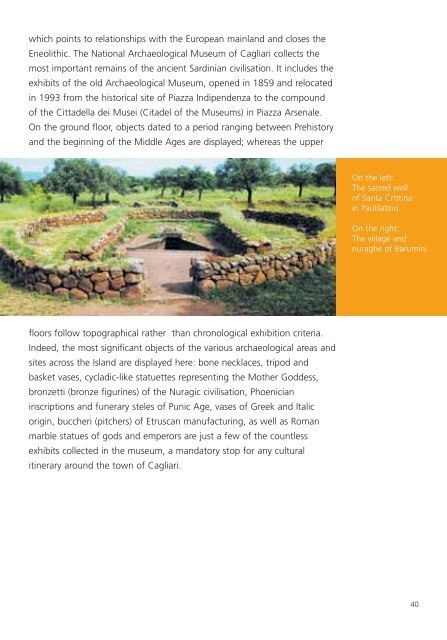You also want an ePaper? Increase the reach of your titles
YUMPU automatically turns print PDFs into web optimized ePapers that Google loves.
which points to relationships with the European mainland and closes the<br />
Eneolithic. The National Archaeological Museum of Cagliari collects the<br />
most important remains of the ancient Sardinian civilisation. It includes the<br />
exhibits of the old Archaeological Museum, opened in 1859 and relocated<br />
in 1993 from the historical site of Piazza Indipendenza to the compound<br />
of the Cittadella dei Musei (Citadel of the Museums) in Piazza Arsenale.<br />
On the ground floor, objects dated to a period ranging between Prehistory<br />
and the beginning of the Middle Ages are displayed; whereas the upper<br />
On the left:<br />
The sacred well<br />
of Santa Cristina<br />
in Paulilatino<br />
On the right:<br />
The village and<br />
nuraghe of Barumini<br />
floors follow topographical rather than chronological exhibition criteria.<br />
Indeed, the most significant objects of the various archaeological areas and<br />
sites across the Island are displayed here: bone necklaces, tripod and<br />
basket vases, cycladic-like statuettes representing the Mother Goddess,<br />
bronzetti (bronze figurines) of the Nuragic civilisation, Phoenician<br />
inscriptions and funerary steles of Punic Age, vases of Greek and Italic<br />
origin, buccheri (pitchers) of Etruscan manufacturing, as well as Roman<br />
marble statues of gods and emperors are just a few of the countless<br />
exhibits collected in the museum, a mandatory stop for any cultural<br />
itinerary around the town of Cagliari.<br />
40
















